Brief Report Samples
-
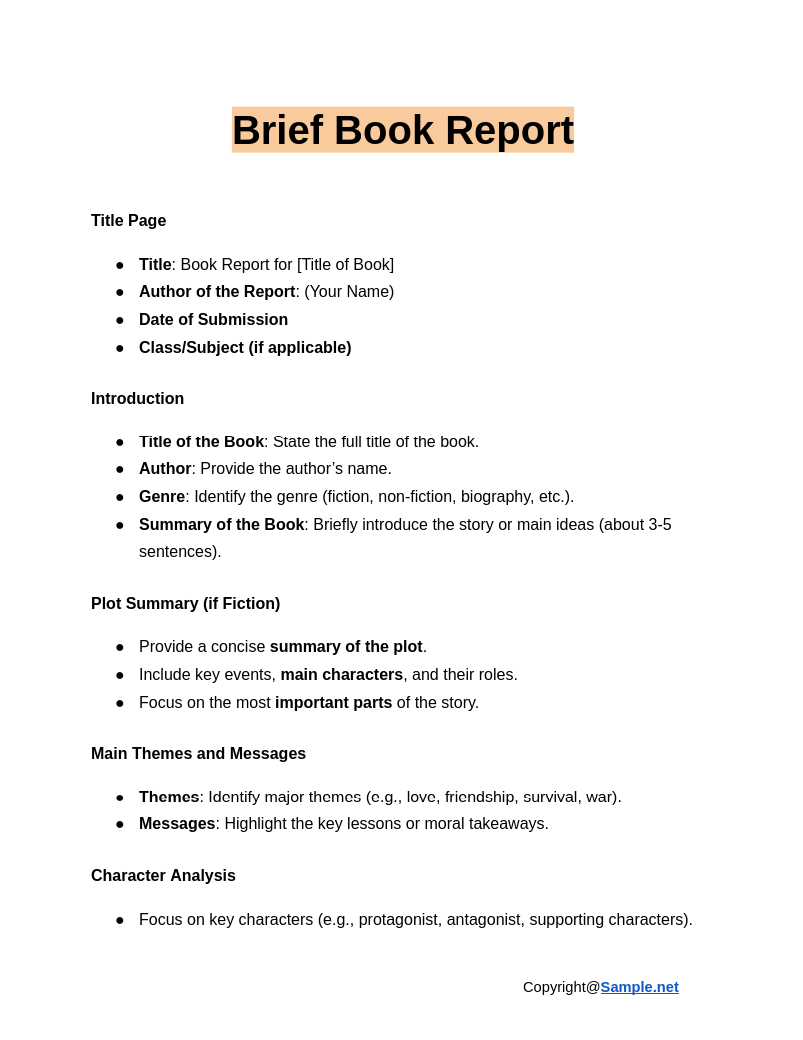
Brief Book Report
download now -
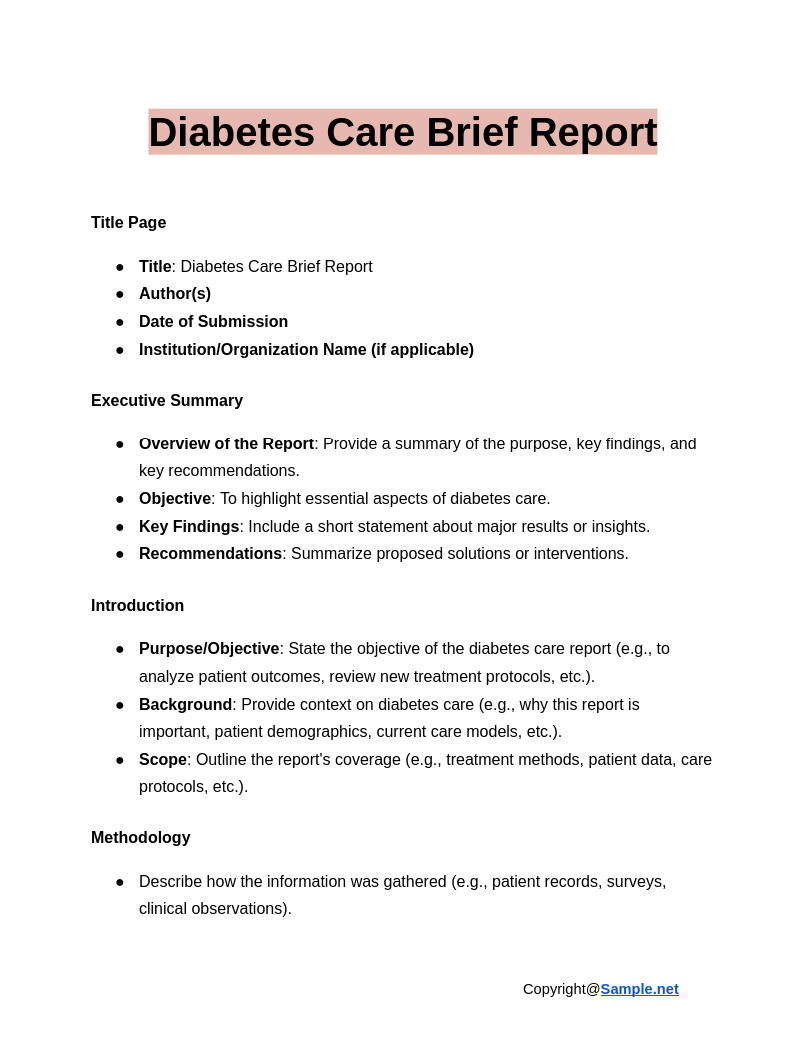
Diabetes Care Brief Report
download now -
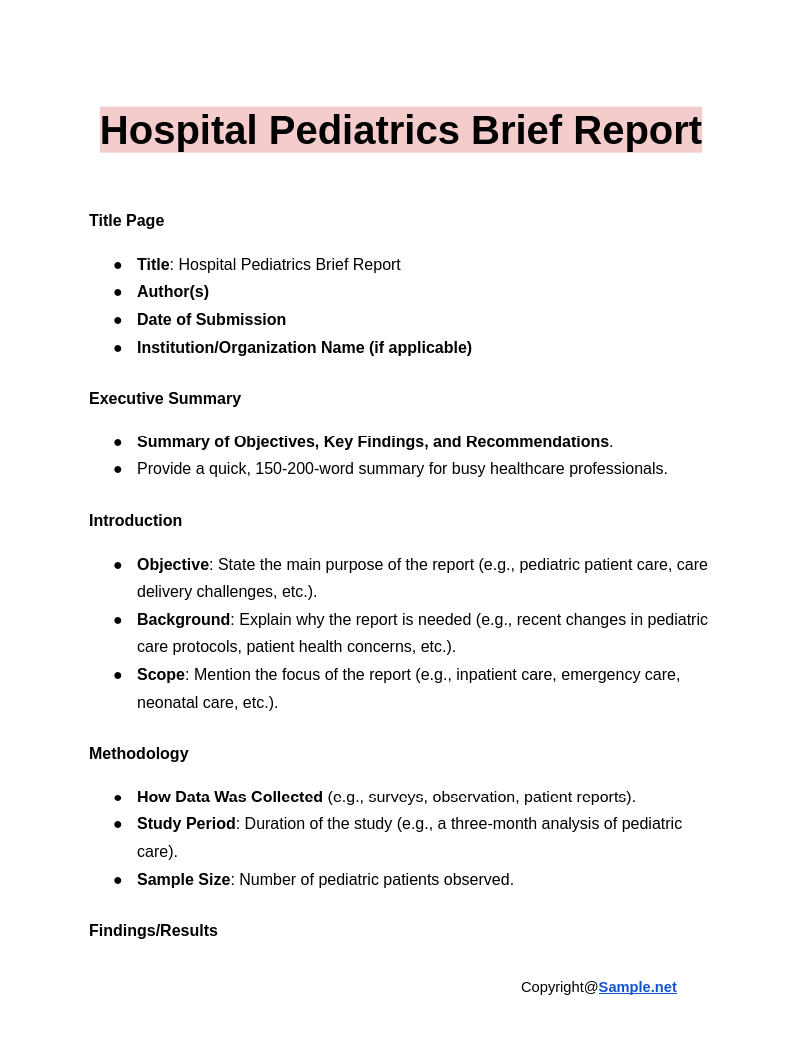
Hospital Pediatrics Brief Report
download now -
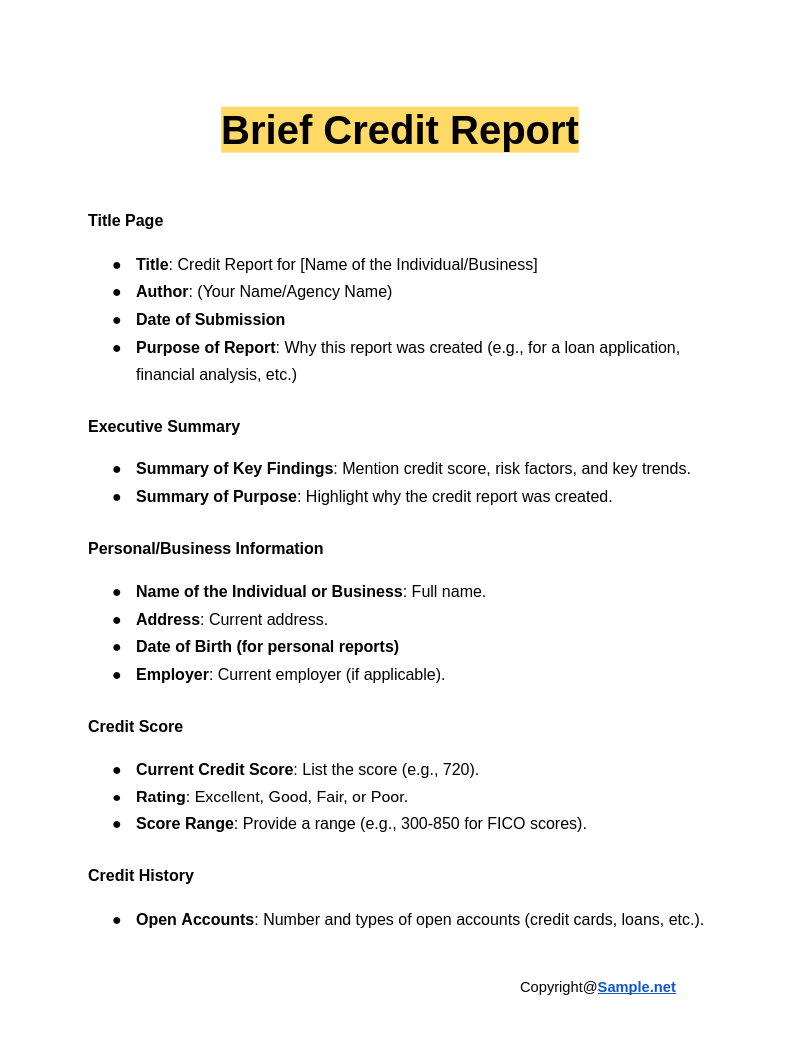
Brief Credit Report
download now -
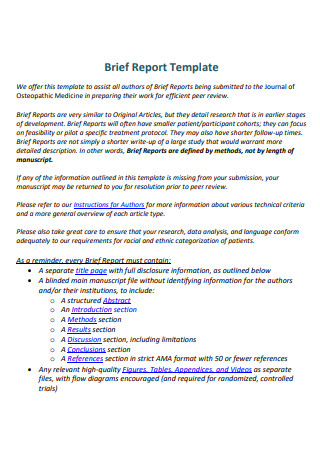
Brief Report Template
download now -

Research Brief Report
download now -

Basic Brief Report
download now -
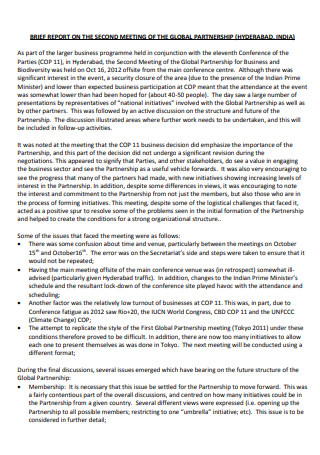
Meeting Brief Report
download now -
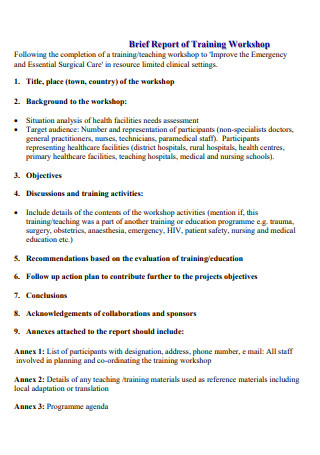
Brief Report of Training Workshop
download now -

Brief Report in PDF
download now -

Cooperative Farm Brief Report
download now -
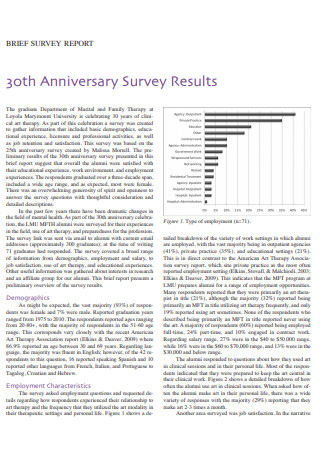
Brief Survey Report
download now -
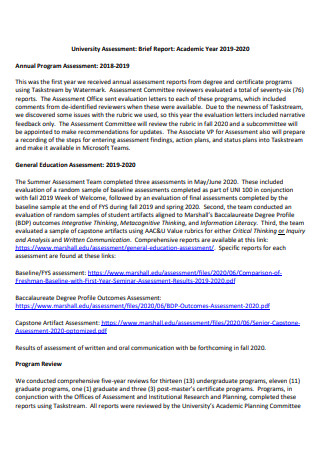
University Assessment Brief Report
download now -
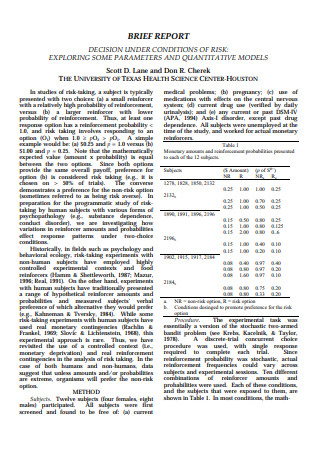
Standard Brief Report
download now -
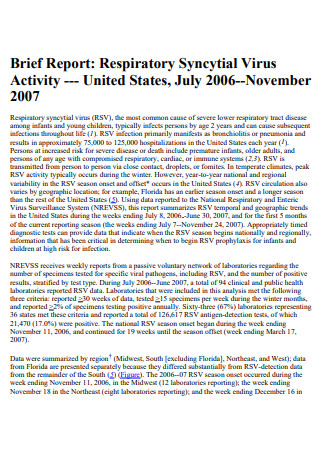
Respiratory Virus Activity Brief Report
download now -

Faculty Brief Report
download now -
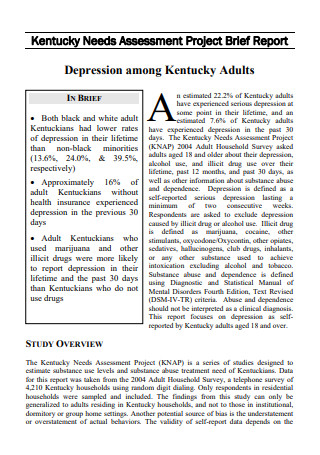
Project Brief Report
download now -
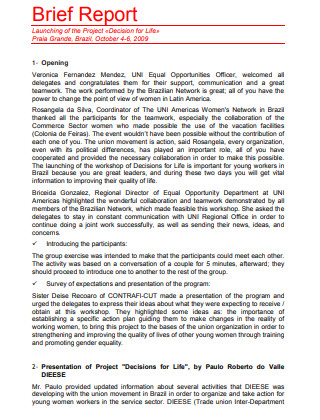
Brief Report Format
download now -
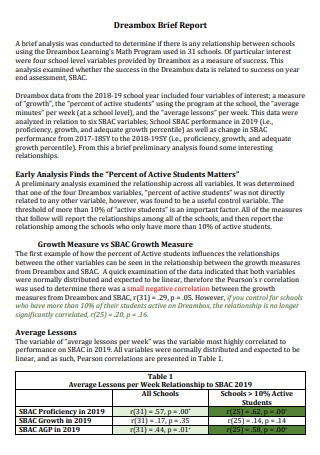
Simple Brief Report
download now -
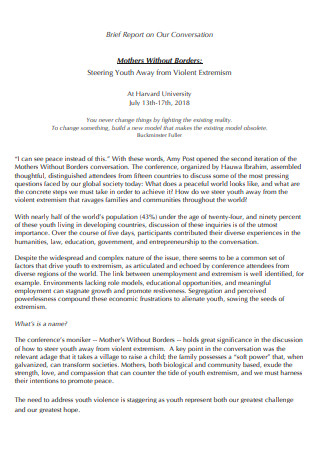
Conversation Brief Report
download now -
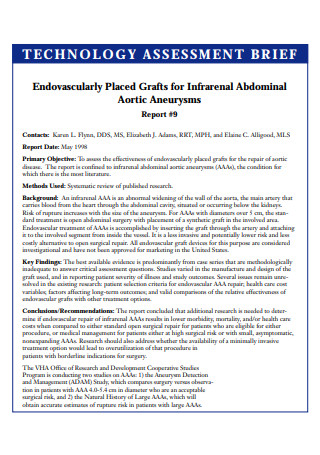
Technology Assessment Brief Report
download now -
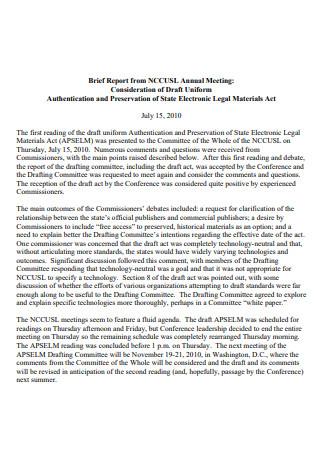
Brief Report Annual Meeting
download now -
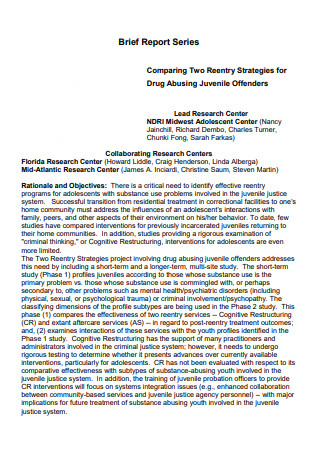
Brief Report Series
download now -
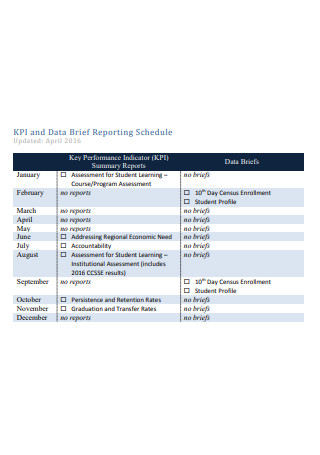
Data Brief Reporting Schedule
download now -
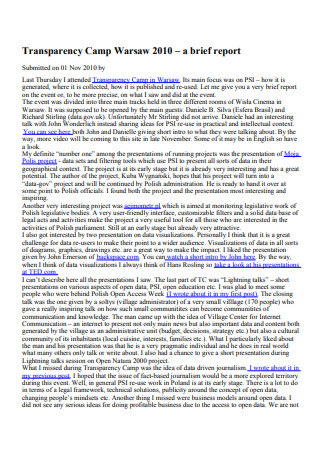
Transparency Camp Brief Report
download now -
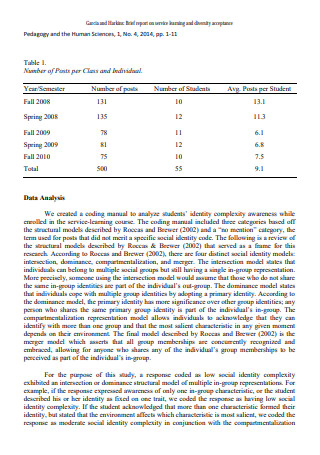
Brief Report on Service Learning
download now -
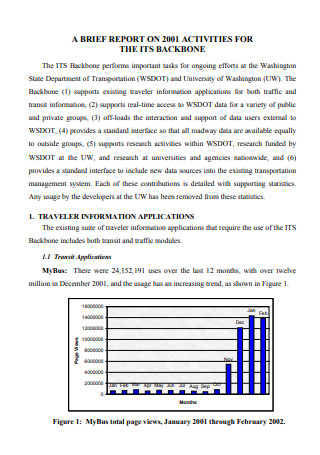
Formal Brief Report
download now -
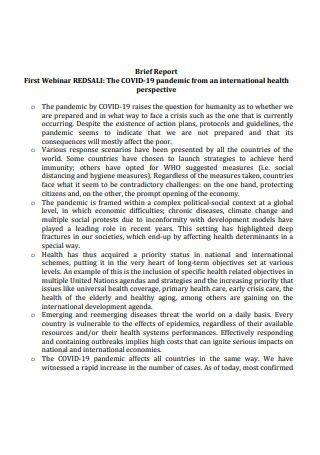
Brief Report Example
download now -
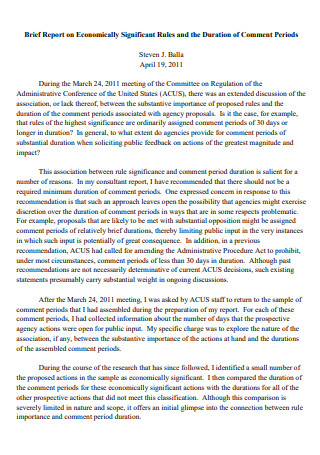
Printable Brief Report
download now -
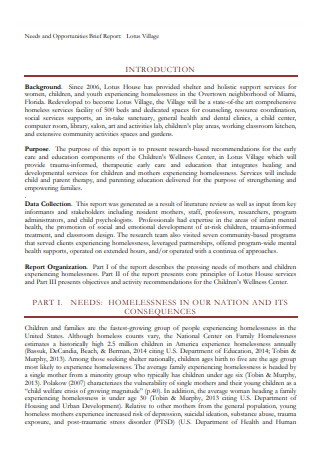
Needs and Opportunities Brief Report
download now -
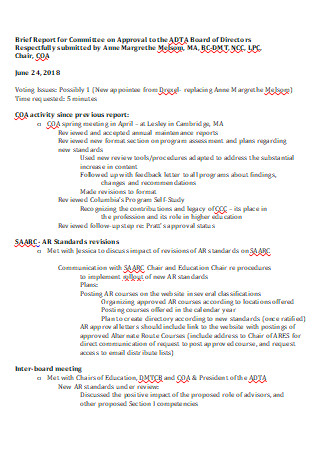
Committee Brief Report
download now
FREE Brief Report s to Download
Brief Report Format
Brief Report Samples
What is a Brief Report?
The Standard Sections of a Brief Report
How to Make a Brief Report
FAQs
How long should a brief report be?
What is the simplest format of a brief report?
What are the types of reports?
Why are brief reports important?
How does a brief report differ from a full report?
What should I avoid when writing a brief report?
What are the common mistakes in writing brief reports?
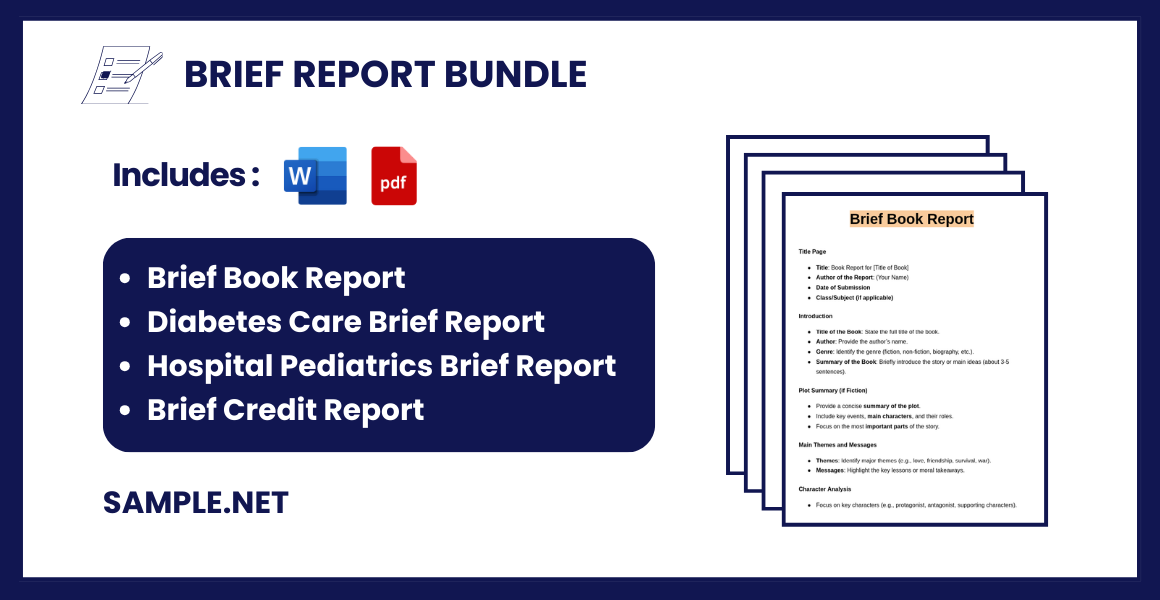
Brief Report Format
A brief report is a concise document that presents essential information in a clear, structured, and easy-to-read format. Here is a standard structure for a brief report:
1. Title Page
- Title of the Report (clear and descriptive)
- Name of the Author(s)
- Date of Submission
- Organization/Company (if applicable)
2. Executive Summary
- A short summary (150-200 words) providing an overview of the key points.
- Includes the purpose, main findings, conclusions, and recommendations.
3. Introduction
- Purpose/Objective: State the goal or aim of the report.
- Background/Context: Provide context and explain why the report is necessary.
- Scope: Highlight what the report will cover (and what it will not).
4. Methodology (Optional)
- Describe the methods, tools, or processes used to collect data or information.
- If applicable, mention sources like surveys, interviews, or research.
5. Findings/Results
- Key Findings: Present the main points or insights gathered.
- Use headings or subheadings to organize the information.
- Include charts, graphs, or tables for clarity (if applicable).
6. Analysis/Discussion
- Interpret the findings and explain their implications.
- Compare results with expectations, industry standards, or previous studies.
- Address potential limitations or issues.
7. Conclusion
- Summarize the key findings in a clear, simple way.
- Highlight the overall message or takeaway.
8. Recommendations
- Provide specific, actionable steps based on the findings.
- Ensure recommendations are practical and relevant to the target audience.
9. References
- List any external sources or citations used in the report.
- Use a consistent format (APA, MLA, etc.).
10. Appendices
- Include extra information, data, or supplementary material.
- Examples: large charts, raw data, or detailed explanations.
Additional Tips
- Be concise: Use bullet points, headings, and subheadings.
- Use visual aids: Charts, graphs, and tables make data more digestible.
- Maintain clarity: Avoid jargon and keep the language simple.
- Proofread: Ensure no grammatical or spelling errors.
What is a Brief Report?
A Brief Report is a short, structured document designed to communicate essential information clearly and efficiently. It presents core insights, conclusions, and recommendations about a specific subject. Typically limited in length, it focuses on key findings, eliminating unnecessary details. Brief reports are commonly used in businesses, research, and academic institutions where fast, precise communication is essential. This format enables decision-makers to grasp important details quickly, saving time while still providing crucial insights for analysis or action. You can also see more on Meeting Summary Report.
The Standard Sections of a Brief Report
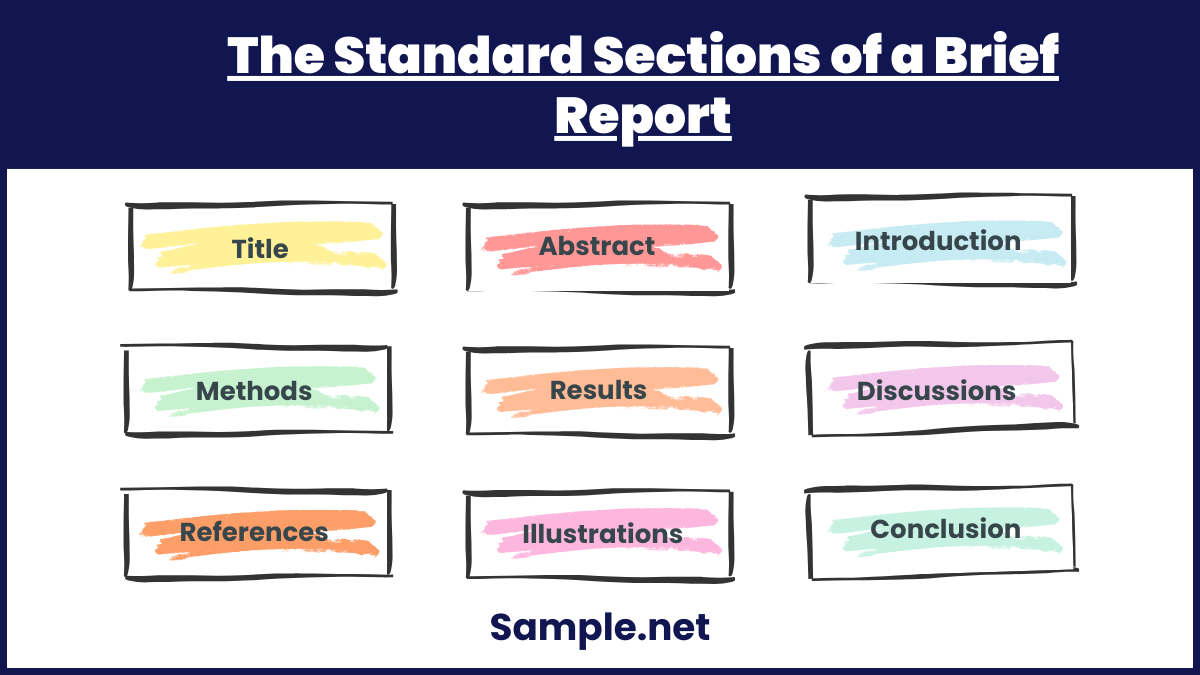
Based on a report by MSRJ, did you know that there are eight standard sections of a brief report? These are the title, abstract, introduction, methods, results, discussions, references, and illustrations. But what exactly are they? In this section, you will be introduced to each fundamental section of a brief report. You can also see more on Event Report.
How to Make a Brief Report
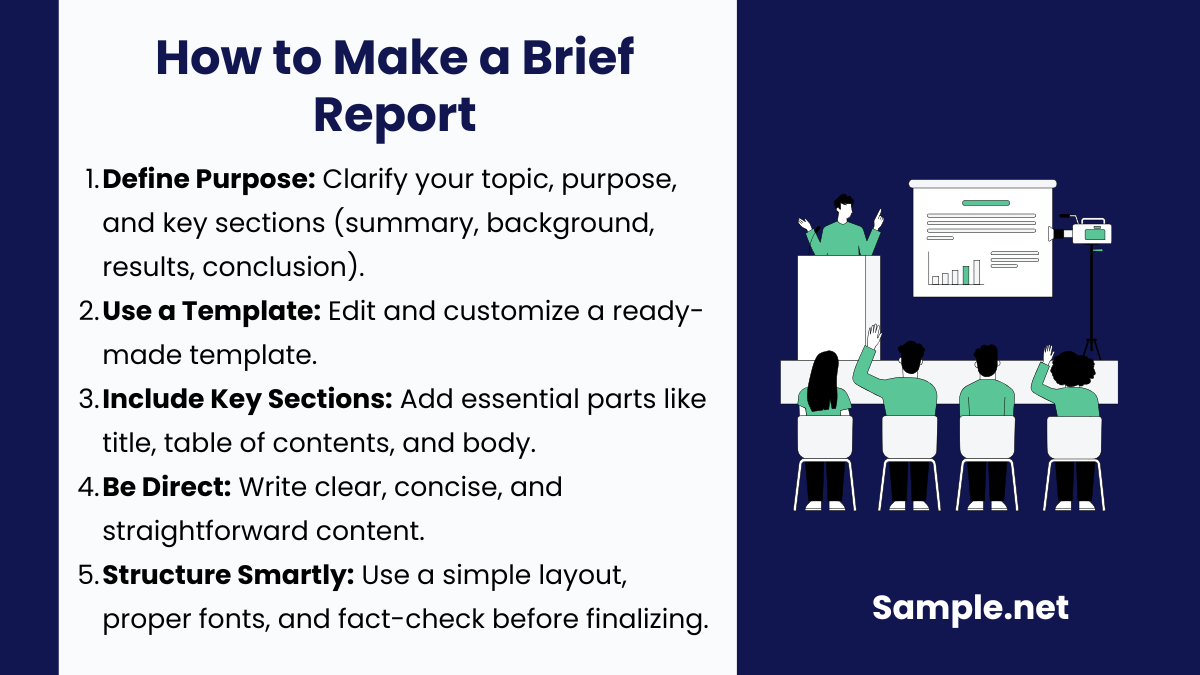
Now that you have been fully introduced to a brief report’s definition, caliber, sections, and more, it is time for the meat of the article. Are you ready to create your brief report? Not to worry because you won’t go empty-handed. Here are the five basic steps that will get you covered to make a top-notch brief report pronto:
Step 1: Gather Enough Background about Your Subject
First things first, what are you reporting for? You should be clear with your subject and purpose right from the start because you might not know what to talk about later on. It would be smart to have a draft ahead about your report’s executive summary, background statement, purpose, procedure, results, and conclusion because they are your guide regarding what to write in the brief report. And with a full understanding of your topic, writing and reporting will be made easier.
Step 2: Use a Sample Brief Report Template
Who says you need to make a brief report from scratch? That won’t be necessary because sample brief reports are ready to accommodate you anytime. The sample templates listed in this article are your options to concoct brief reports quickly. You can even decide however you want the report should turn out. You can download, print, edit, and explore each template so you need not stick to standard examples. Personalize and work on your sample brief report until its result finally pays off.
Step 3: Denote the Brief Report’s Important Sections
From the title down to the illustrations section, you already know the basic parts of a brief report. So be sure each section is added to your brief report to complete the document. Be sure to put the right labels and categories for the sections so readers can easily navigate the parts in the document, just like how you can navigate easily with the table of contents. Also, you can add more sections that you think are still relevant to the report. Just keep it concise no matter what.
Step 4: Be Direct to the Point
The best advice for writing brief reports is to be direct at all times. Let go of long, complicated, and flowery words because simple and straightforward words are much welcome. In fact, they are a lot easier to understand. You can write brief reports like you are writing business letters wherein you are formal with your words but you are making it easy for your audience to understand the content shortly. Be sure to reread your sentences if it needs to be shorter or more straightforward.
Step 5: Observe an Easy-to-Follow Format and Structure
The proper way to design your brief report is by making it easy to follow at all costs. This goes from the format and structure of the report. Generally, the whole business document must have limited words (excluding the abstract, reference, and illustration.) But you can add more if you can’t trim down the details or go for lesser words, which would be much better. Also, consider the font style, font size, and spacing as they matter too. The same goes for fact-checking the data, which is the most important consideration to evaluate. And finalize if the document should be printed or perhaps, saved as a soft copy only. Publish it once you are confident with the result.
FAQs
How long should a brief report be?
Expect a brief report to be short that it should not be longer than 2,500 words and it must not exceed 10 pages.
What is the simplest format of a brief report?
A brief or short report can be made simple with only the overview, background information, goal statement, results, and conclusion for its format.
What are the types of reports?
There are many types of reports. And the most common types are the following:
- Long and brief reports
- Formal and informal reports
- Vertical and lateral reports
- Proposal reports
- Functional reports
- Periodic reports
- Informational and analytical reports
Why are brief reports important?
Brief reports provide concise information that supports quick decision-making. They save time for readers while delivering essential details for action. You can also see more on Brand Brief.
How does a brief report differ from a full report?
A full report provides a comprehensive analysis of a topic, often containing extensive research, case studies, and background information. In contrast, a brief report focuses on key findings, essential data, and conclusions in a short, concise format. Brief reports prioritize time efficiency, making it easier for decision-makers to act quickly.
What should I avoid when writing a brief report?
Avoid excessive detail, unnecessary jargon, and irrelevant information. Stay focused on the key purpose of the report. Avoid lengthy explanations and ensure the report has a logical flow. It’s essential to maintain clarity and brevity. You can also see more on Work Status Report.
What are the common mistakes in writing brief reports?
Common mistakes include providing too much detail, using technical jargon, omitting key points, and having poor organization. Another mistake is failing to review and edit the report, which can result in grammar errors or unclear communication.
